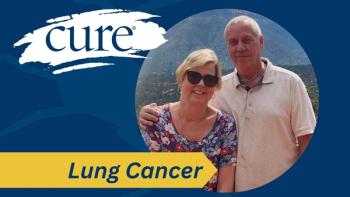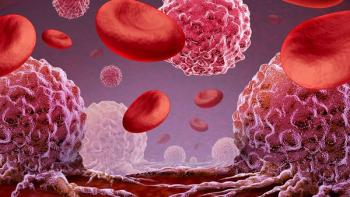
Nurses ‘Bridge the Gap’ Between Patients, Doctors to Talk End-of-Life Care
One expert explained how nurses have “opportunities to get to talk with patients and their loved ones in ways that you don't (get) when you're in the time crunch of an appointment with your oncologist,” and how that can impact end-of-life care.
For patients with cancer and their caregivers, nurses can play an integral role when it comes to communicating wishes for end-of-life care, as one expert explained to CURE®.
“Nurses bridge the gap, I feel, oftentimes, between the medical community and patients and caregivers, because … especially with the patients with cancer, they may be getting infusions, or different kinds of treatments, so there's a fair amount of time when nurses are in and out of the room or they're attending to the patients, etc., where physicians obviously wouldn't necessarily be there,” said Sara Douglas, a Gertrude Perkins Oliva professor in oncology nursing at Case Western Reserve University’s Frances Payne Bolton School of Nursing in Cleveland.
“And so, there are opportunities to get to talk with patients and their loved ones in ways that you don't (get) when you're in the time crunch of an appointment with your oncologist in the exam room,” Douglas noted.
Learn More:
In addition to being present during treatments, nurses can also potentially be part of patients’ palliative care teams, providing them further opportunities for connection and communication, as Douglas explained.
“There are lots of good opportunities for nurses to interface with patients and their family to find out what are the patient's wishes, and to then see that perhaps some discussions can take place between the patient, the family and the oncologist,” Douglas said.
Douglas, who is set to study the variables that determine the quality of end-of-life care for patients and caregivers through a five-year study of 300 patients with stage 4 lung, pancreatic and gastrointestinal cancers and their caregivers, spoke with CURE® about the way nurses can “bridge the gap” between patients and doctors.
Learn More:
Transcription:
We're not in every exam room, so we don't know what kinds of discussions are taking place, obviously, but we also know that oncologists oftentimes are not entirely sure what patients want. And caregivers aren't entirely sure, oftentimes, what patients want. And so, I think that even in the area of cancer — where, regardless of the diagnosis you receive, it carries with it a heavy burden, oftentimes a feeling that your life has now been shortened regardless of your stage or type of cancer — that we still find reluctance, if you will, for these discussions to take place until it's much closer to death, and (not) at points where we might have been able to alleviate some of the suffering or do a better job of providing the kind of care that was aligned with what the patient's wishes were.
Nurses bridge the gap, I feel, oftentimes, between the medical community and patients and caregivers, because … especially with the patients with cancer, they may be getting infusions, or different kinds of treatments, so there's a fair amount of time when nurses are in and out of the room or they're attending to the patients, etc., where physicians obviously wouldn't necessarily be there.
And so, there are opportunities to get to talk with patients and their loved ones in ways that you don't (get) when you're in the time crunch of an appointment with your oncologist in the exam room. And so, nurses do play an important role because oftentimes, they can be the person to provide information to the oncologist about, (say,) ‘It might be helpful to have a discussion the next time you see them because they're having these kinds of questions.’
Also, there are palliative care services, which are basically meant to provide supportive care to cancer patients. So, palliative care is not the same as hospice, even though oftentimes people get those terms sort of mixed up. But when patients and their loved ones are having appointments for palliative care services, that means to get medication or treatment to help manage symptoms, they're still getting active treatment, but they're getting additional either pain medication or other kinds of strategies to minimize some of the side effects of treatment. Oftentimes, those are also good opportunities. And most of those appointments oftentimes may be with nurses.
So, there are lots of good opportunities for nurses to interface with patients and their family to find out what are the patient's wishes, and to then see that perhaps some discussions can take place between the patient, the family and the oncologist.
Transcript has been edited for clarity and conciseness.
For more news on cancer updates, research and education, don’t forget to





